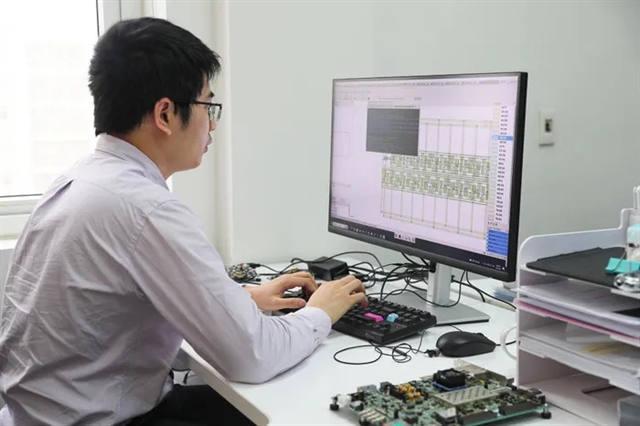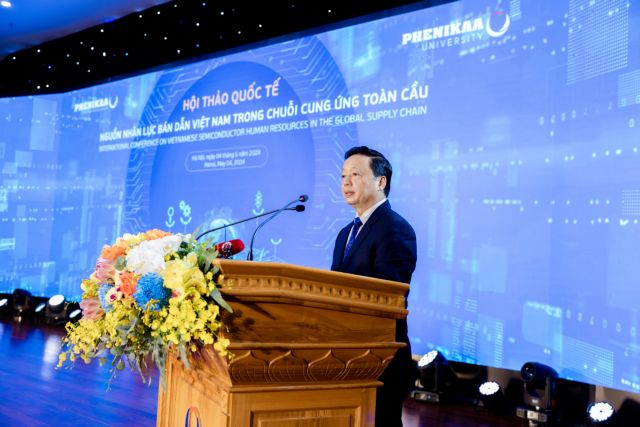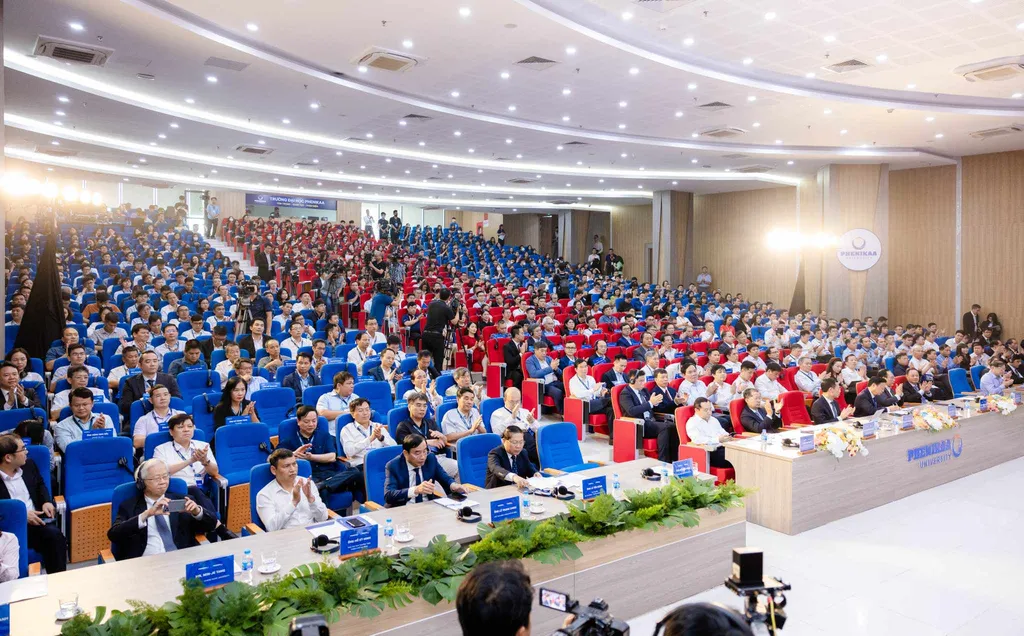 Opinion
Opinion

 |
| Deputy Prime Minister Trần Hồng Hà delivered a speech at the conference. — Photo courtesy of Phenikaa Group |
Thu Trà
HÀ NỘI — Promptly developing high-quality personnel resources is vital for Việt Nam to utilise its advantages and participate effectively in the multibillion-dollar chain of the semiconductor industry, said Deputy Prime Minister Trần Hồng Hà.
During a conference hosted by Phenikaa Group in Hà Nội late last week, the Deputy PM emphasised the importance of the semiconductor industry, saying that it has laid a foundation that would shape the development of many other fields in the global economy.
The semiconductor industry is also a driving force behind the global green transformation, digital transformation, and knowledge-based development trends. Meanwhile, green transformation, digital transformation, and the electronics industry will facilitate the strong development of the semiconductor sector, he said.
According to the Deputy PM, the world's semiconductor chip market has maintained a rapid and stable growth rate over the past 20 years. It is forecast to become an industry with a scale of trillions of dollars by 2030.
He said that Việt Nam is racing against time and has taken fundamental steps to facilitate the development of the semiconductor industry from the State's policies and laws to endless efforts in improving infrastructure, such as energy and logistics.
He added that the Government is focusing on building a strategy for developing the semiconductor industry and a project on training human resources for the sector with international standards.
To train tens of thousands of high-quality workers in the semiconductor industry, however, the top priority will be given to training and attracting a team of high-quality, experienced teachers and lecturers who specialise in the industry to improve teaching quality. This will require in-depth training courses and programmes, and creating conditions and environments for them to continue researching and updating the latest knowledge, he noted.
 |
| Participants at the conference hosted by Phenikaa Group. — Photo courtesy of the group |
Minister of Information and Communications Nguyễn Mạnh Hùng said one of the steps of the national strategy on the semiconductor industry is to make Việt Nam become a human resource hub for the global semiconductor industry and later develop the semiconductor industry in Việt Nam. This hub will also help investment in research, design, production, packaging, and testing of the semiconductor chips in Việt Nam.
The minister said a human resource shortage in the sector is seen worldwide but it is mainly in the short and medium term and Việt Nam can quickly meet the global demand for personnel resources in the sector in the short, medium, and long term.
Currently, Việt Nam has 600,000-700,000 information technology, software, and electronics engineers. If retrained in 6-12 months, they can be ready for the semiconductor industry, Hùng said.
To do so, Việt Nam needs facilities, teachers, and textbooks. Closer cooperation between semiconductor businesses and universities and the State's investment in training facilities should also be included.
During the event, the chairman of Phenikaa Group Hồ Xuân Năng said the current world context has created the need to redraw the world map of semiconductors. That will open up opportunities for Việt Nam to develop the semiconductor industry ecosystem with the first step to be given to training high-quality human resources in the sector.
Việt Nam has the necessary conditions and factors to develop the semiconductor industry thanks to a stable political system, favourable geographical location, and the State's great efforts in promulgating policies and creating legal corridors to develop high-tech products, especially ones in the semiconductor sector, Năng said.
The development of the semiconductor industry and its human resources also required close coordination among the State, universities, and businesses, Năng said.
Năng added that Phenikaa Group and its education system have teamed up with strategic partners to develop human resources in the semiconductor industry, from research and development of semiconductor chip products to design, production, assembly, testing, packaging, connecting equipment, thereby promoting Việt Nam's development and deeper participation in the global semiconductor supply chain.
In the latest move, Phenikaa has established the Phenikaa Semiconductor Training Centre to mark its participation in the semiconductor industry in Việt Nam.
The centre will conduct research and training activities in IC design, semiconductors, technology transfer, international cooperation, resource mobilisation, and collaboration and cooperation with domestic and foreign partners to promote research and training activities on semiconductor chip design.
It aims to train more than 8,000 semiconductor chip design engineers with international certificates and at least 12,000 engineers and high-level workers to work in Assembling, Testing, and Packaging (ATP) factories by 2030.
The event also saw strategic cooperation agreements signed among Phenikaa and some foreign universities such as Arizona State University from the US, Chang Gung University from Taiwan (China), and several companies such as Synopsys, SiCADA, and VMO Holdings. — VNS




